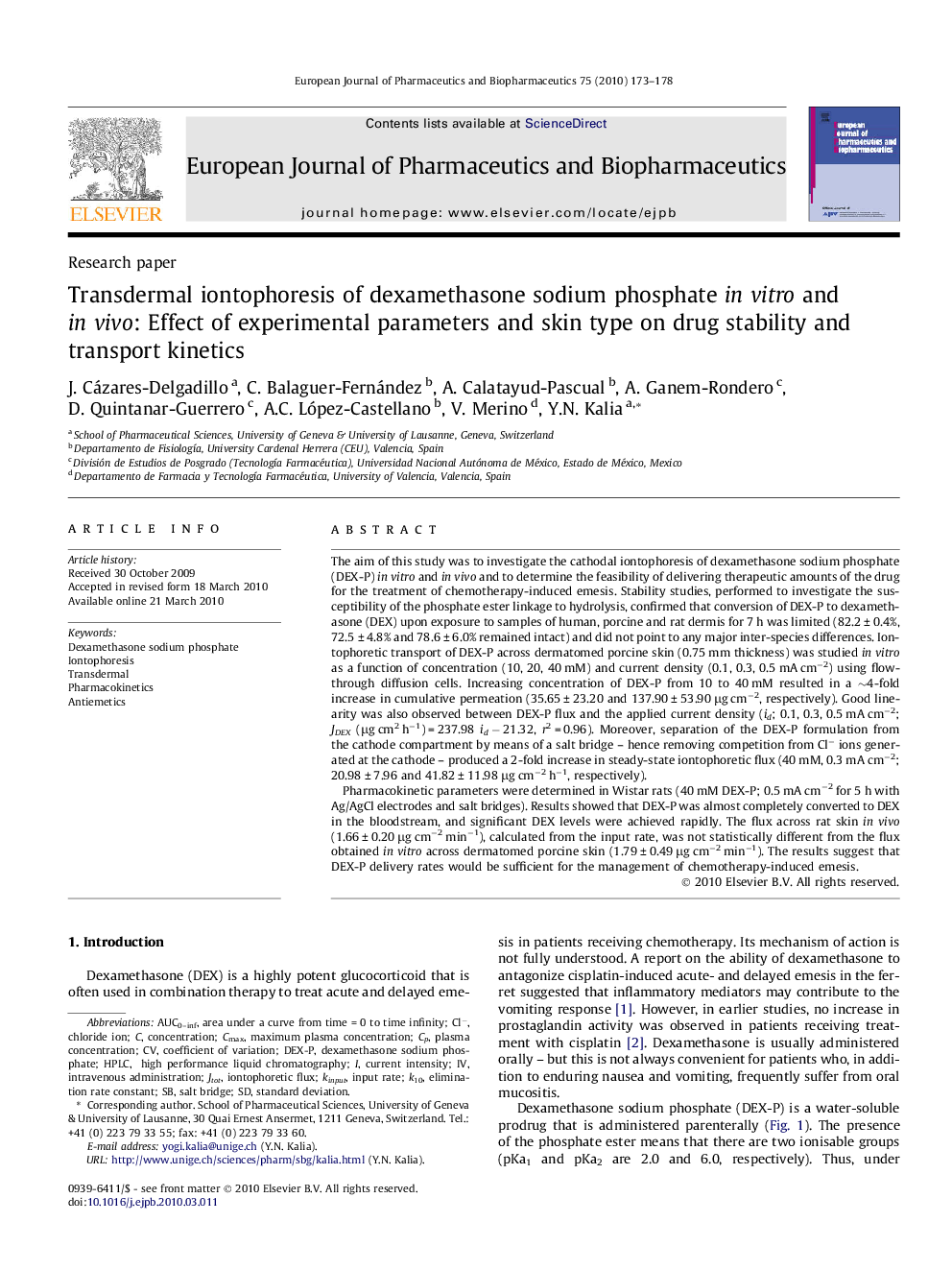| کد مقاله | کد نشریه | سال انتشار | مقاله انگلیسی | نسخه تمام متن |
|---|---|---|---|---|
| 2085515 | 1545378 | 2010 | 6 صفحه PDF | دانلود رایگان |

The aim of this study was to investigate the cathodal iontophoresis of dexamethasone sodium phosphate (DEX-P) in vitro and in vivo and to determine the feasibility of delivering therapeutic amounts of the drug for the treatment of chemotherapy-induced emesis. Stability studies, performed to investigate the susceptibility of the phosphate ester linkage to hydrolysis, confirmed that conversion of DEX-P to dexamethasone (DEX) upon exposure to samples of human, porcine and rat dermis for 7 h was limited (82.2 ± 0.4%, 72.5 ± 4.8% and 78.6 ± 6.0% remained intact) and did not point to any major inter-species differences. Iontophoretic transport of DEX-P across dermatomed porcine skin (0.75 mm thickness) was studied in vitro as a function of concentration (10, 20, 40 mM) and current density (0.1, 0.3, 0.5 mA cm−2) using flow-through diffusion cells. Increasing concentration of DEX-P from 10 to 40 mM resulted in a ∼4-fold increase in cumulative permeation (35.65 ± 23.20 and 137.90 ± 53.90 μg cm−2, respectively). Good linearity was also observed between DEX-P flux and the applied current density (id; 0.1, 0.3, 0.5 mA cm−2; JDEX (μg cm2 h−1) = 237.98 id − 21.32, r2 = 0.96). Moreover, separation of the DEX-P formulation from the cathode compartment by means of a salt bridge – hence removing competition from Cl− ions generated at the cathode – produced a 2-fold increase in steady-state iontophoretic flux (40 mM, 0.3 mA cm−2; 20.98 ± 7.96 and 41.82 ± 11.98 μg cm−2 h−1, respectively).Pharmacokinetic parameters were determined in Wistar rats (40 mM DEX-P; 0.5 mA cm−2 for 5 h with Ag/AgCl electrodes and salt bridges). Results showed that DEX-P was almost completely converted to DEX in the bloodstream, and significant DEX levels were achieved rapidly. The flux across rat skin in vivo (1.66 ± 0.20 μg cm−2 min−1), calculated from the input rate, was not statistically different from the flux obtained in vitro across dermatomed porcine skin (1.79 ± 0.49 μg cm−2 min−1). The results suggest that DEX-P delivery rates would be sufficient for the management of chemotherapy-induced emesis.
Journal: European Journal of Pharmaceutics and Biopharmaceutics - Volume 75, Issue 2, June 2010, Pages 173–178